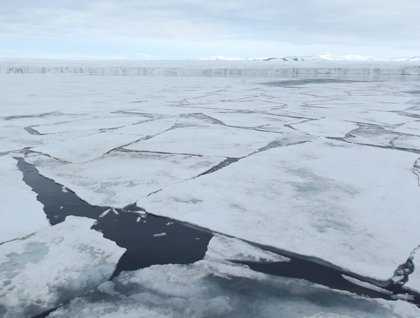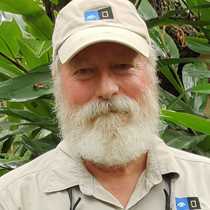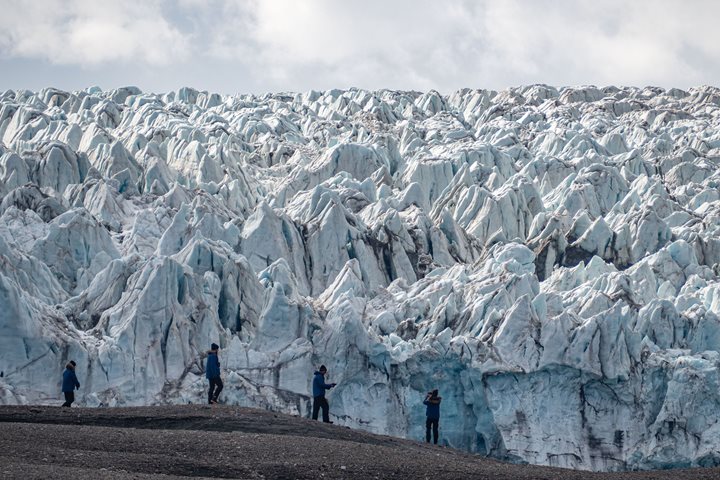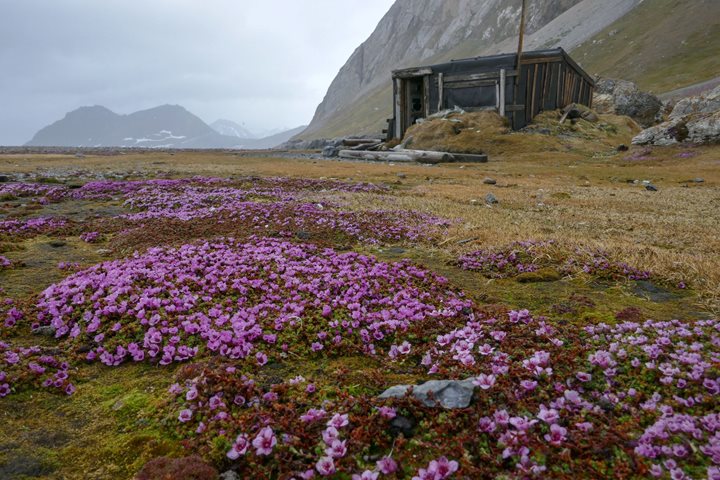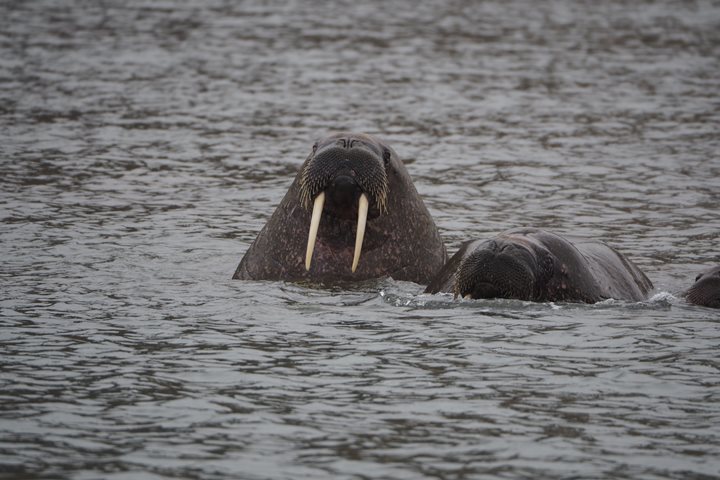We spent most of the day within Storfjorden, an immense icy body of water that separates Spitsbergen and Edgeøya (Edge Island). The early morning hour found us still celebrating Midsummer and as there was no sunset tonight, it wasn’t surprising that many people stayed up to watch a polar bear searching for seals on fast ice near Edgeøya. Seals, both bearded and ringed, were scattered about over the ice surface, but they were too alert for any hunting bear to surprise them. We later made our way south-westward over to Spitsbergen Island and spent time before breakfast searching for wildlife on the fast ice around Hambergbreen, a very scenic glacier. There were many more seals to be seen hauled out on this ice, including bearded seals with rust-colored heads and thick moustaches, and of course plenty of ringed seals (sometimes improperly called bear food). It was fun to also see several tiny ringed seal pups. We were hoping to see another polar bear or two, but none was sighted, much to the relief of the seals, no doubt. By late morning, we had sailed past Hedgehogfjellet (an interesting name) and reached Isbukta (Ice Bay). There was plenty of ice in this large bay to interest us and we had fun cruising around amongst the ice floes with our strong, ice-strengthened ship.
Numerous groupings or pods or harps seals were seen cavorting in open water between ice floes and there was a constant movement in all directions of skeins of guillemots and little auks flying in straight lines just over the water’s surface, as well as countless individuals swimming about in search of food...these waters must be incredibly rich to support such huge numbers of sea birds. In the early afternoon, we cruised along more pack ice out in open water in the southern reaches of Storfjorden, and then turned westward and sailed around the southern end of Spitsbergen and out to the Arctic Ocean drop off along the western edge of the Svalbard Archipelago. The calm, glass-smooth sea conditions created nice reflections as we kept a watchful eye for more marine mammals.
After dinner, we reached the drop off and were immediately rewarded with an encounter of eight to ten blue whales within sight at one time. There were several adults of enormous size (remember, this is the largest animal species on Earth today and most likely of all time) and a couple of juveniles…one of which approached very close to our vessel. A short distance farther on from the grouping of blue whales were two or three fin whales (the second-largest animal species on Earth). And, a little ways beyond them was a single humpback whale, which was being escorted by a large flock of kittiwakes. The sea birds were picking up leftovers from the humpback’s messy lunge-feeding technique. It was not possible to see what these whales were feeding on, but everyone seemed to be succeeding quite well.
Throughout much of the day, we could enjoy spectacular mountainous scenery on Spitsbergen in the background. This southeastern region of Spitsbergen is quite old, geologically speaking. The coastal mountains (where not covered with snow and ice) clearly show many horizontal sedimentary layers of different colors. These layers exhibit a continuous history of sea floor deposits that were laid down from 360 to 200 million years ago (Carboniferous through Cretaceous periods). Erosion on the outer slopes of the mountains produces small boulders and rocks composed of fine sediments, many of which later split apart into small flat sections. The flat faces of some of these rocks exhibit invertebrate fossils that lived in ancient seas and it is always exciting to find them as we walk along Svalbardian shorelines.

